A little background here. My mother used to tell me that when she was pregnant with me, she read WWII aviation books to me. She always figured this was where I developed my life-long fascination with these aircraft. I built my first model airplane, a Monogram P-40B, when I was 3. I built model airplanes all the way to junior high, took a decade+ off, then returned to the hobby just a few years after graduating from Texas A&M.
So I probably was a pretty arrogant youngster, given all this building of WWII aircraft I did as a kid, thinking I knew pretty much everything there was to know about warbirds. So I am perusing a book store after graduating from A&M, when I found a giant encycopedia of all the world's aircraft. I bought the book, brought it home and was flipping through it when I encountered the following photograph:

Imagine my surprise upon seeing this. Here I am thinking I knew everything there was to know, and here, staring at me, was an airframe that resembled a B-29 but clearly was not a Superfortress. The caption for the photograph identified this as a German heavy bomber (a concept that I was previously certain did not exist within the WWII Luftwaffe, but what did I really know? - NOT MUCH, as it turned out).
This was before Al Gore invented the internet, so all I had to go on was this one photograph. Not much there. But this photograph inspired me to writing a currently unfinished alternate history book (this is another topic, much too lengthy to get into here, but life finds a way to get in the way of things like book writing and the like).
So this bomber has been an interest of mine for more than 20 years now. About a decade ago, I found a kit had been manufactured, so I snapped it up. Looking at the sprues, it did not appear to be a highly detailed kit, but I relegated it to the stash for a number of years until I got the urge to actually build this beast.
The kit is by Special Hobby. Now I don't know about anyone else, but I generally think their kits are garbage. No locator pins. The wings typically are just glued to the fuselage with no interior sparring or methods for fastening. I had 3 other kits in the stash, and 2 of those fought me tooth and nail. I managed to get them together, but I was not happy with the result. One ended up under a hammer after it frustrated me to the very edge of fury. But this one was one that I really wanted to build successfully, so a couple of months ago, after I finished my F-16, I cracked this one open.
This kit taunted me. I spent a lot of time dry fitting this thing. I engineered solutions to attach the wings and rudders, where there was nothing but a tiny stub. And most importantly, I took my time.
This beast really wants to be a tail-sitter. There is a whole lot of weight in the form of BBs buried in not only the fuselage behind the interior cockpit bulkhead, but also in all four engine nacelles. Even with all that weight, she barely stays on her forward gear.
This is not the only metal in the build, though. I used brad nails to give positive attachment points for the rudders. I also used a small diameter plastic tube to give the wings more strength, as well as a few more brad nails to assist in affixing the wings to the fuselage.
The kit came with a lot of resin - the entire cockpit, the wheel wells, the engine faces and the spinners for the four props. The canopy is a vacu-formed unit rather than clear styrene.
Paint is Model Master with bare weathering in the form of exhaust staining on the underside nacelles.
I used the above photograph for inspiration on attaching the props. Looks like I emulated the historic photo pretty well.

More shots of the Amerika bomber:
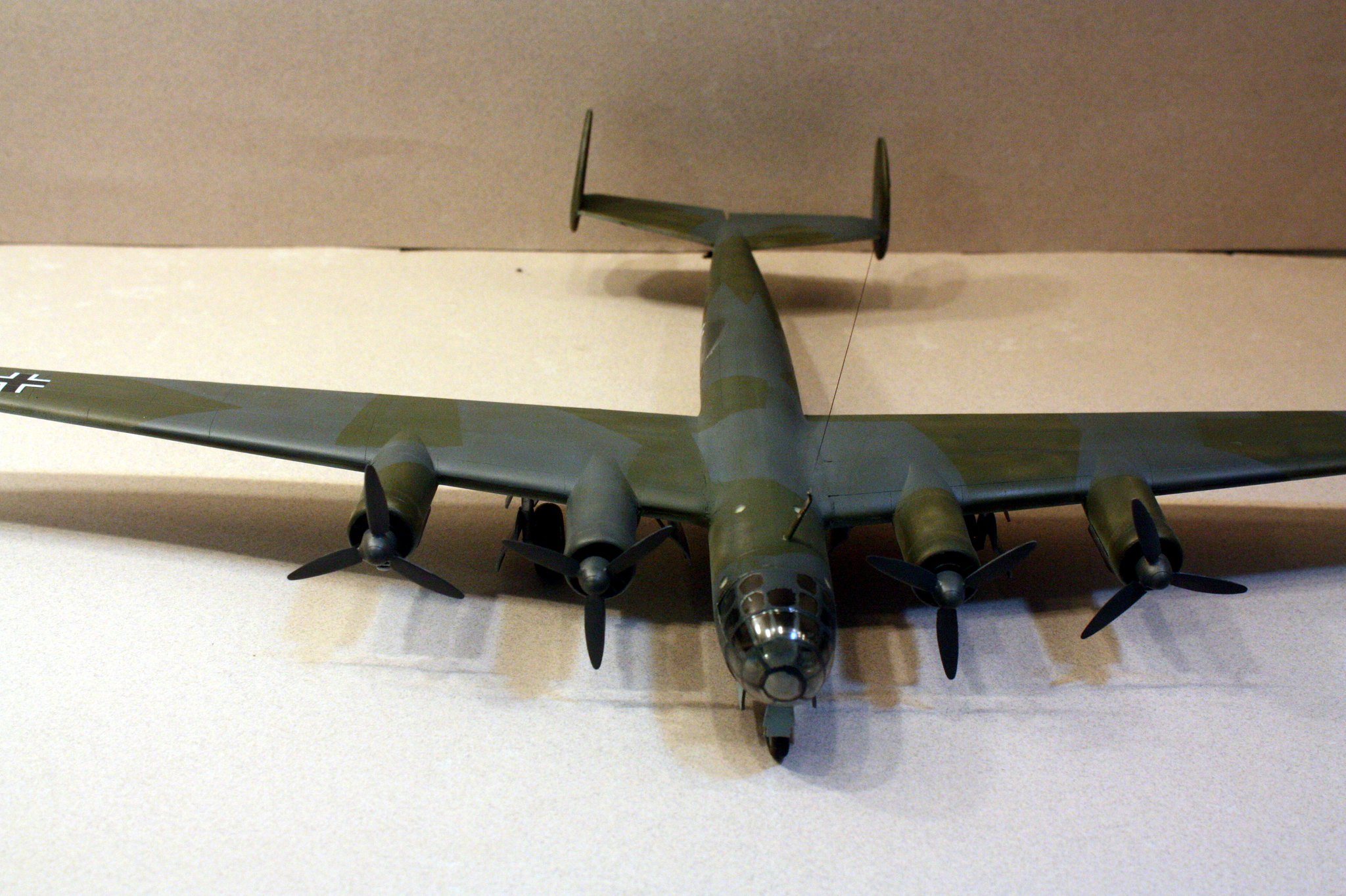
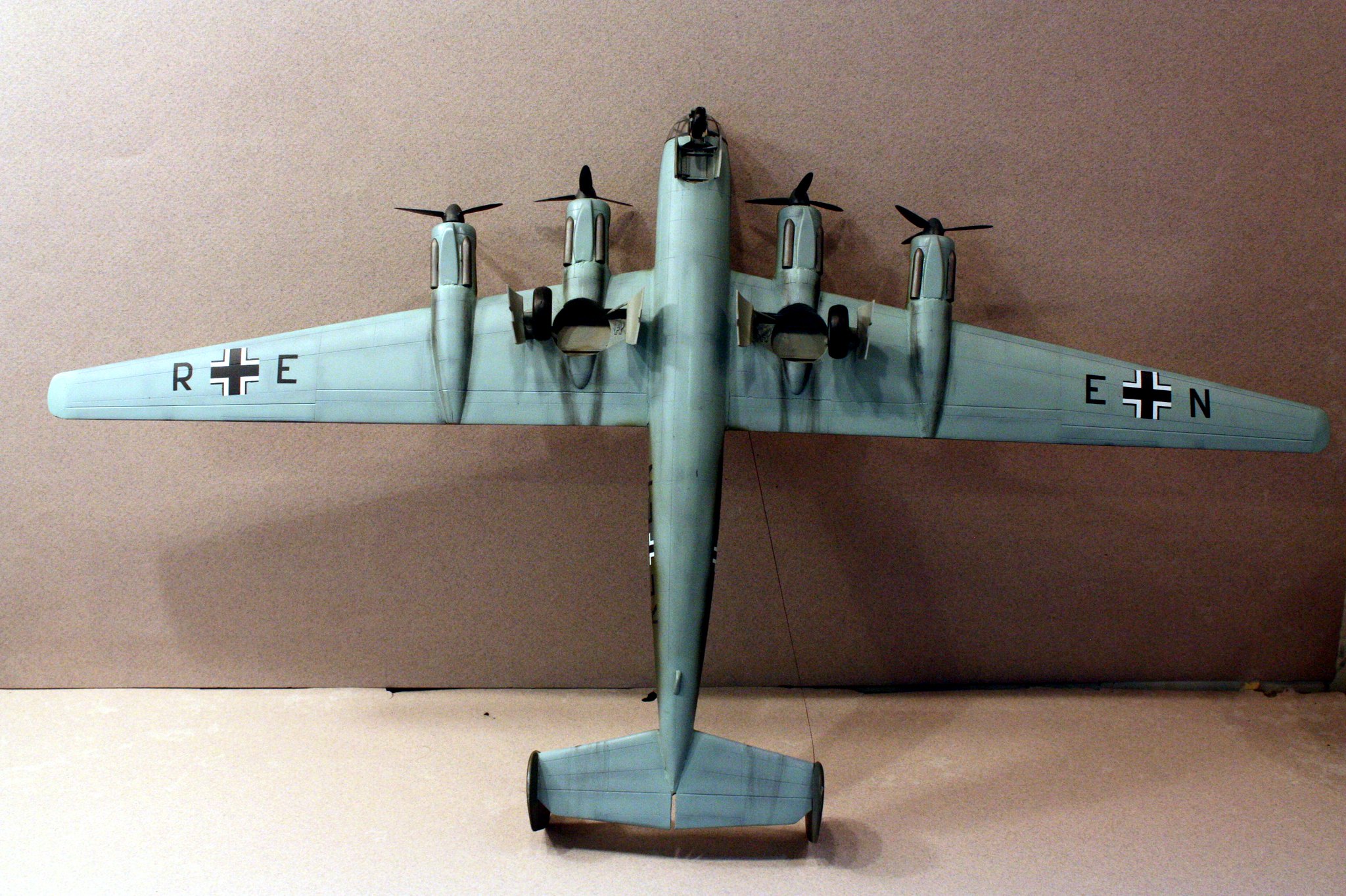
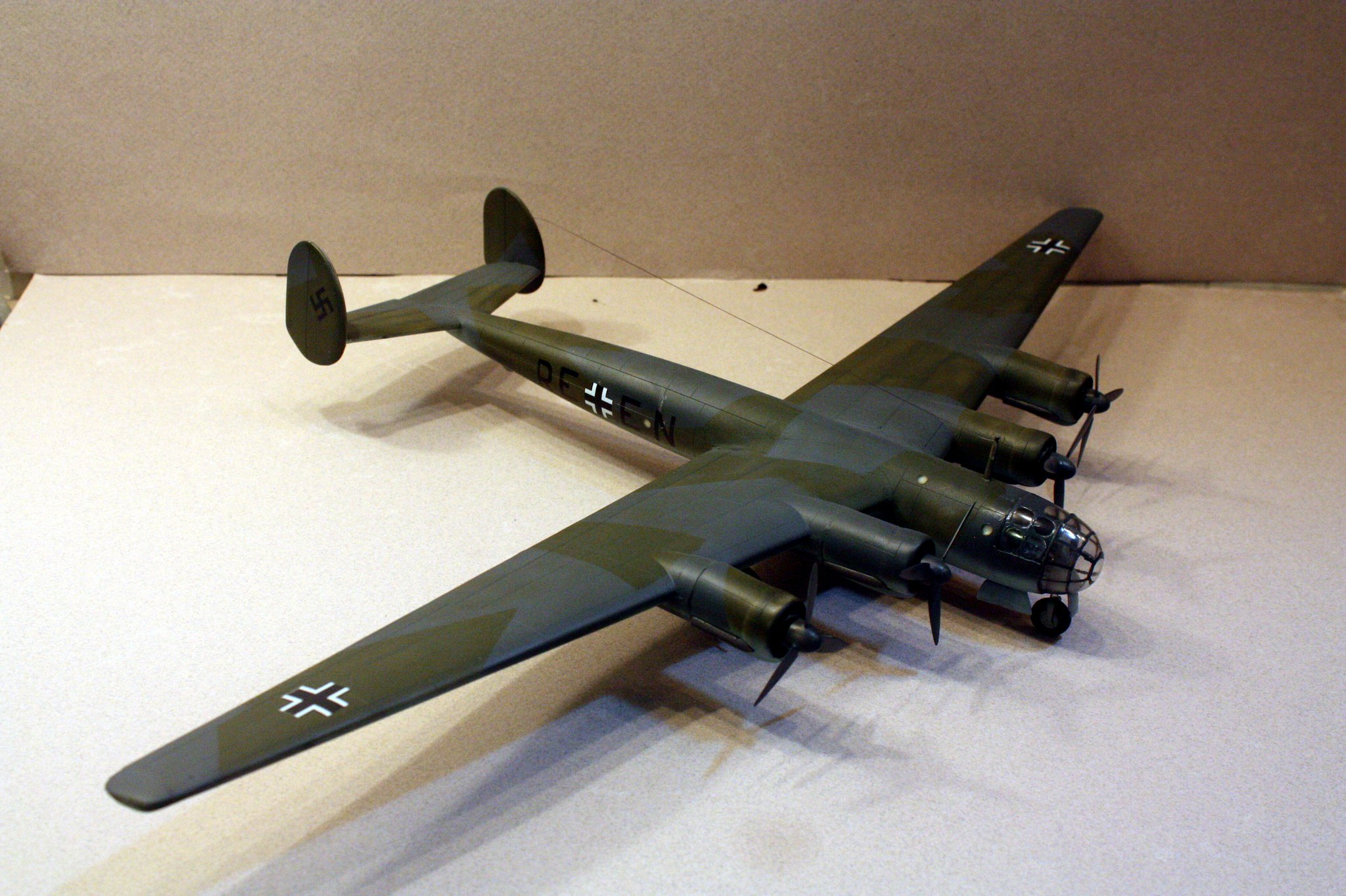
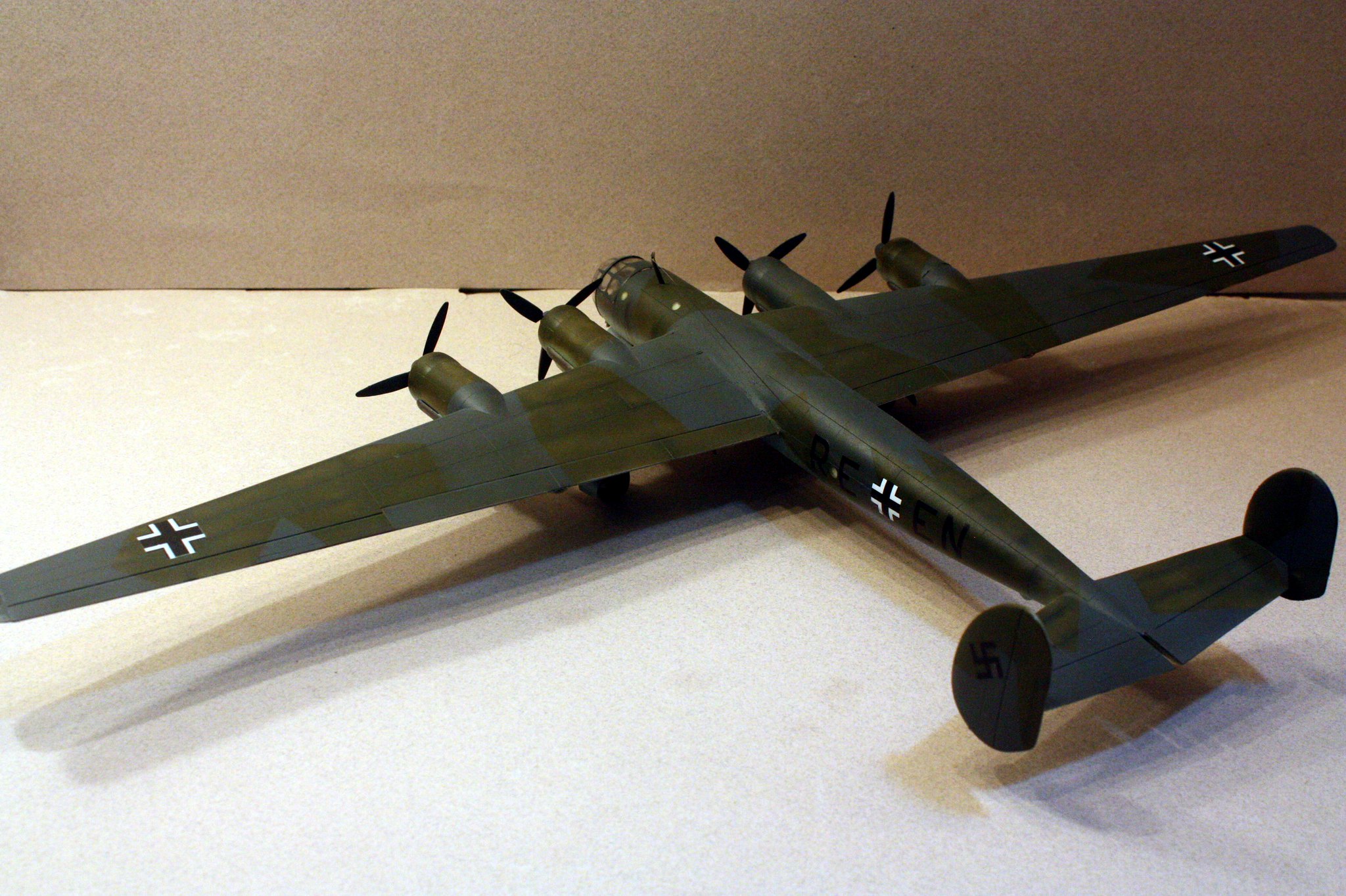
Here is a shot where I was trying to replicate another historic photo of this aircraft, but it reveals a slight problem with the canopy attachment. So looks like I'll have to do a little repair work...
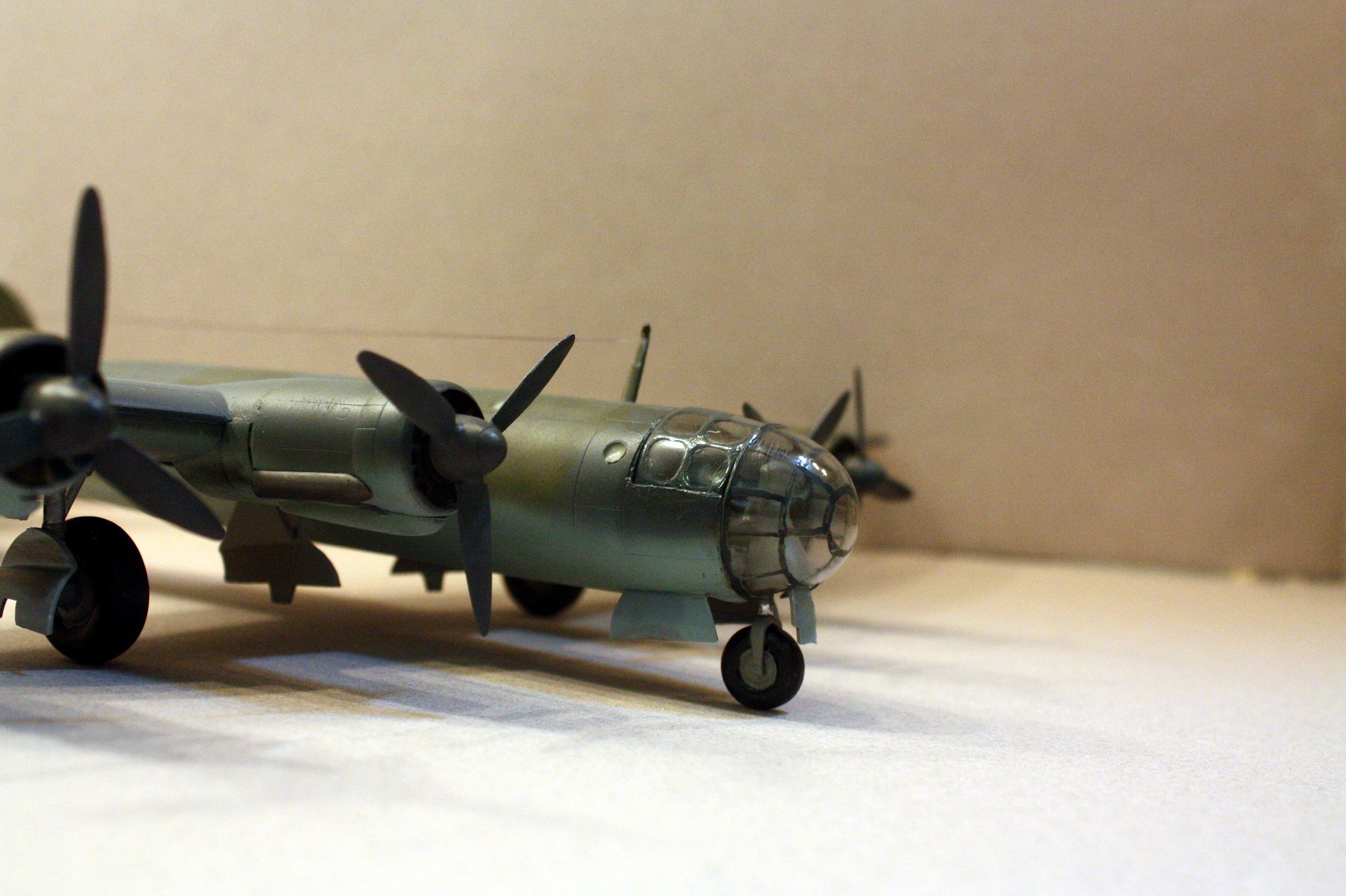
Finally, a pretty major problem with the kit exists that most would likely not even recognize. The kit is supposed to be a Me-264-V1 with Jumo 211J-1 inline engines, which are accurately represented, but the wingspan scales out a good bit too long. The wings actually scale more closely to the V2 model of the Me-264 that was fitted with BMW 801G radial engines. What to do? I did not find any aftermarket BMW 801G engines, so the only alternatives were to leave well enough alone or to do some wing tip surgery. I opted for the surgery. I sawed off about an inch off each wing tip and then fashioned new tips from plastic card and a lot of putty and sanding.
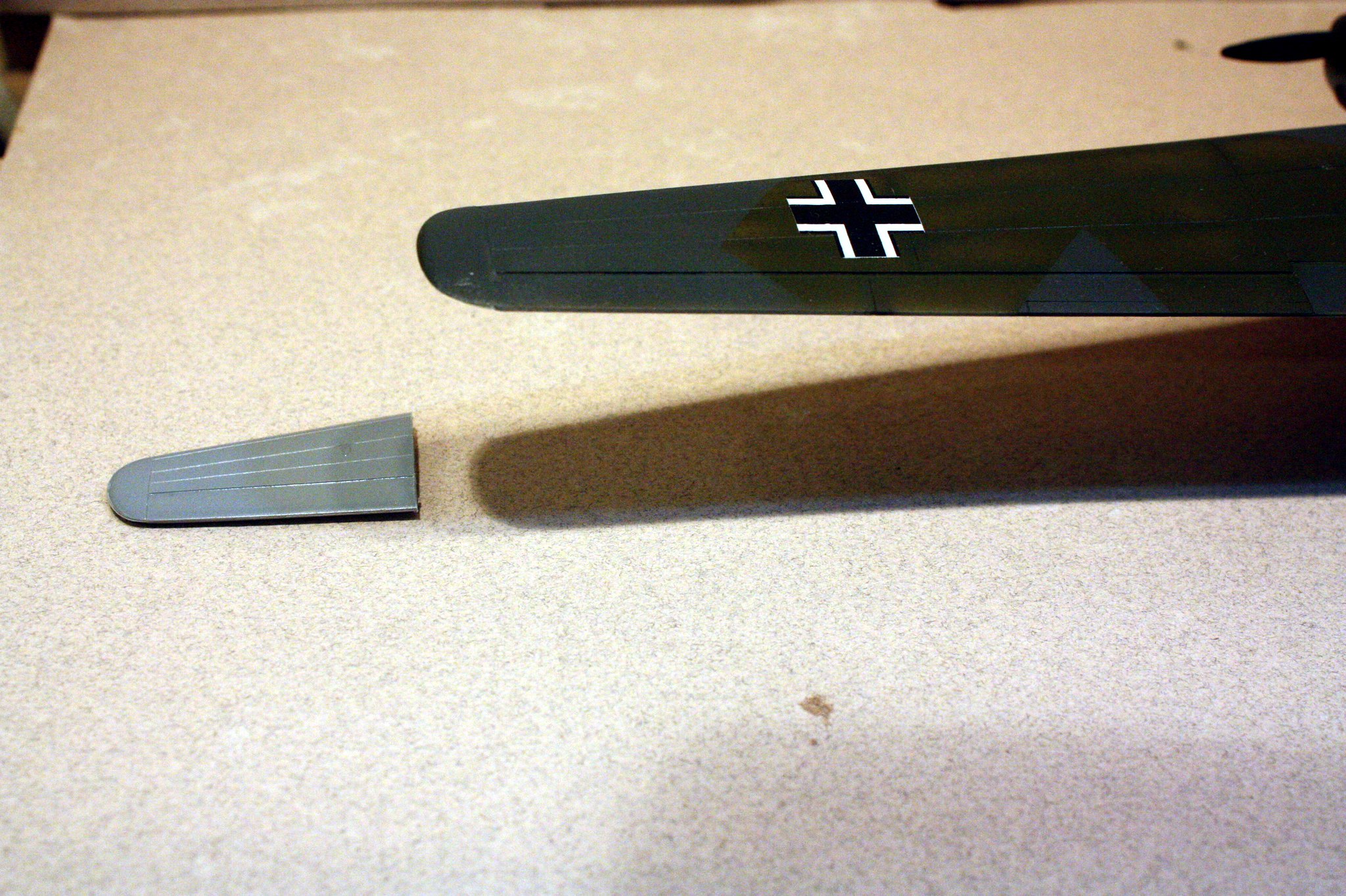
Hope everyone enjoys looking and reading the history lesson.